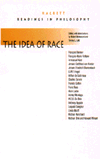Kant’s Race Theory, Forster’s Counter, and the Metaphysics of ColorPosted in Articles, Literary/Artistic Criticism, Media Archive, Philosophy on 2012-12-06 00:23Z by Steven |
Kant’s Race Theory, Forster’s Counter, and the Metaphysics of Color
The Eighteenth Century
Volume 53, Number 4, Winter 2012
pages 393-412
DOI: 10.1353/ecy.2012.0032
Sally Hatch Gray, Assistant Professor of German
Mississippi State University
This article argues for an understanding of Kant’s race theory as an integral part of his idea of nature and of humans in nature as presented in his Critique of the Power of Judgment (Kritik der Urteilskraft, 1790). It places an examination of Kant and Forster’s debate over race, which was ignited in 1785 upon the publication of Kant’s second essay on race, “Definition of a Concept of a Human Race” (“Bestimmung des Begriffs einer Menschenrace”), in the context of an illumination of the connections between aesthetics and anthropology in Kant’s Observations on the Feeling of the Beautiful and Sublime (Beobachtungen über das Gefühl des Schönen und Erhabenen, 1764) and Forster’s Voyage round the World (Reise um die Welt 1777). Forster responded to Kant’s new “race” classifications, which were based essentially on skin color, with “Still More about the Human Races” (“Noch etwas über Menschenraßen,” 1786). This article shows that Kant then developed his scientific theory and his idea of a teleological nature as presented in his Critique of the Power of Judgment, at least in part, in order to provide a unifying theoretical basis for his race theory so that it could withstand the scrutiny of an empirical scientific method based on deductive logic, such as that advanced by Forster. While Forster’s strict empiricism, perspectivism, and rejection of “race” as a scientific classification reflect an underlying, distinctly modern, concept of the natural world, Kant’s nature, as presented in his third Critique, reveals a metaphysically-based structure supporting a universal cosmopolitanism, but veils a particular European perspective that allows a damaging global authority on difference.
At a key moment in his 1777 travelogue A Voyage Round the World (Reise um die Welt) describing his adventures aboard Captain Cook’s second exploratory journey into the Antarctic, the narrative of the young German naturalist Georg Forster (1754-94), takes on a decidedly more excited tone. In August 1773, he and his traveling companions were enjoying the charms of the Society Islands, when, during a banquet featuring traditional dancing, the atmosphere became sexually charged. The sailors bribed the women with bits of meat to continue making seemingly indiscreet dance movements, while the hosts treated the British officers and Prussian naturalists to a peek into the dancers’ dressing room. Forster writes:
To complete our entertainment this day, the chief gave orders for performing another heeva, and we were admitted (behind the scenes} to see the ladies dressing for that purpose. They obtained some string of beads on this occasion, with which we took it into our heads to improve upon their ornaments, much to their own satisfaction. Among the spectators we observed several of the prettiest women of this country, and one of them was remarkable for the whitest complexion we had ever seen in all these islands. Her colour resembled that of white wax a little sullied, without having the least appearance of sickness, which that hue commonly conveys; and her fine black eyes and hair contrasted so well with it, that she was admired by us all.
Forster’s excitement helps to relay the intense experience of a special event which “perfects the joys of the day” as he writes in German, “Um die Freuden dieses Tages volkommen zu machen.” In this moment, they have not only been released from the physical hardship of months at sea aboard an eighteenth-century sailing vessel, but they are taken with “einstimmige Bewunderung” a kind of “unanimous wonderment.” beyond their immediate reality in their response…

